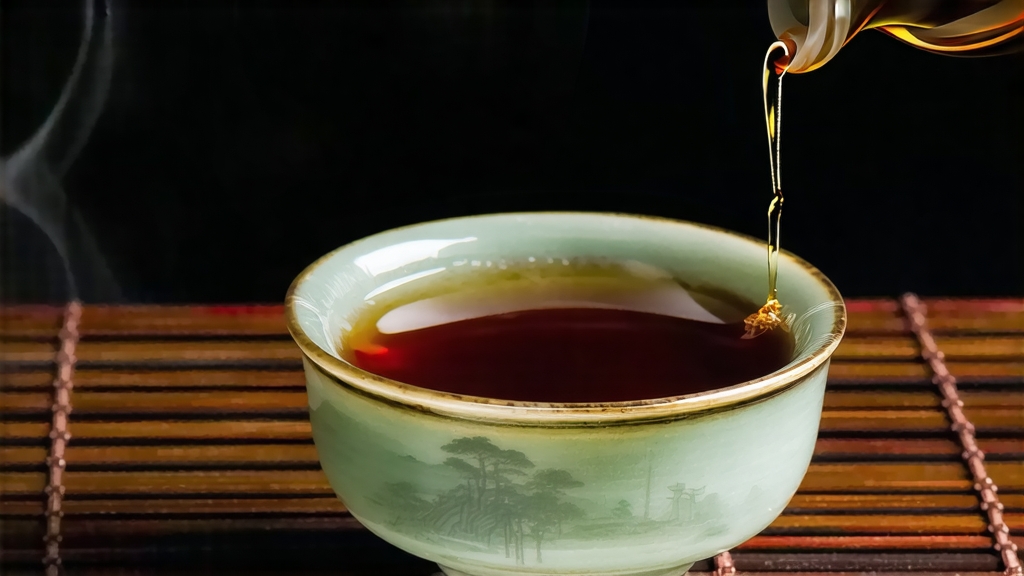
High in the jagged folds of northern Fujian’s Wuyi Mountains, a narrow plank path clings to vermilion cliffs. Below it, the Jiuqu Xi (Nine-Bend Stream) coils like a silk ribbon; above, morning mist lifts to reveal terraces of dark-green bushes rooted in almost pure rock. These are the legendary “cliff gardens,” and the tea that bears their mineral soul is Shui Xian—Narcissus of the Waters—an oolong whose perfume can suggest night-blooming flowers, roasted peach kernels, and the very stones that nursed it.
-
From Myth to Market: A 900-Year Journey
Local monks recount that a 12th-century scholar, fleeing war in the Central Plains, discovered wild tea trees whose leaves smelled irresistibly of narcissus blossoms beside a waterfall shrine. He transplanted several to the cliff hollows of Huiyuan Yan, naming the cultivar “Shui Xian” to honor the flower and the stream. By the Ming dynasty, tribute quotas forced farmers to invent intricate partial-oxidation techniques to keep the tea stable on the 2,000-kilometre journey to Beijing. The Qing saw the first charcoal-roasting pits dug into the mountain itself, giving the tea its signature deep fire note. In 1982, Shui Xian won the Golden Camel prize at the National Famous-Tea Competition, catapulting it from regional cult to global icon, yet true “Zheng Yan” (core-cliff) production remains under 30 tonnes per year—rarer than Burgundy’s grand crus. -
Cultivar & Terroir: Why Rocks Matter
Shui Xian is a large-leaf, medium-late budding variety (Camellia sinensis var. sinensis cv. Shui Xian) whose genetic profile shows high expression of nerolidol and β-ionone, precursors to floral aroma. What sets it apart is terroir: the Wuyi range is a Danxia landform, where 400-million-year-old sandstones and tuff beds weather into shallow, mineral-saturated soils. Day-night temperature swings of 15 °C force slow growth, while short-wave UV at 600 m elevation thickens cell walls, concentrating polyphenols. The result is “Yanyun”—rock rhyme—a tactile finish like licking wet slate that lingers minutes after swallowing. -
Craft: The Eight-Act Drama
a) Picking: Only the middle three leaves are taken when the bud’s third leaf is still half-open, usually between 8 a.m. and noon when dew has evaporated but before the sun wilts the edges.
b) Wilting: Leaves are spread 3 cm thick on bamboo trays set on cliff-side racks; mountain wind reduces moisture to 68 % within two hours, softer than indoor withering and preserving green fragrance.
c) Shaking: In a rattan drum revolving at 18 rpm for 5 minutes, edges bruise against ribs, triggering oxidation enzymes; the process is repeated four times with 45-minute rest intervals, each shake gentler than the last.
d) Oxidation: The pile is covered with wet hemp cloth; temperature held at 26 °C for 2.5 hours until leaf margins turn chestnut while veins remain emerald—50 % oxidation, the sweet spot for Shui Xian.
e) Fixing: A 230 °C wok kill-green lasts 4 minutes, just long enough to halt enzymes without baking out aromatics.
f) Rolling: The hot leaves are wrapped in cotton cloth and rolled underfoot on a rattan mat, twisting strips into dark dragon-like cords that will later unfurl gracefully.
g) Roasting: The signature step. Using local hardwood charcoal from Cyclobalanopsis trees, the tea is baked in a shallow pit for 8 hours at 80 °C, rested for 20 days, then re-baked at 65 °C for another 6 hours. Master roasters listen for a faint “pop” every 90 seconds—moisture leaving the stem core.
h) Refining: Finally, stems and yellow flakes are hand-sorted using a bamboo winnow under skylight; only 65 % of original weight remains. -
Grades & Styles
Zheng Yan (Core Cliff): Gardens inside the 60 km² UNESCO buffer zone; liquor is amber-olive, aroma orchid-toasted almond, finish cooling menthol.
Ban Yan (Half Cliff): Outer slopes; lighter body